What is your main goal when writing a headline for your article? You may say that the headline’s purpose is just to describe the contents of the article or to give readers a taste of what’s to come.
These are both important goals in headline writing, but as any marketer, blogger, or journalist will tell you, they are not the primary goal. The main goal of any headline is to get people to click. In order to do this, your headline needs to catch peoples’ attention from the jump, and then it needs to capitalize on that attention with strong information and a great hook.
In this post, we will look into what makes for eye-catching headlines, show some examples, and then walk you through the process of crafting your own headlines that will get clicked.
Let’s get into it.
Download These Templates to Write Attention-Grabbing Headlines
It can be difficult to write headlines that grab your audience’s attention, but you don’t have to do it alone. These resources and templates will help you every step of the way as you push toward writing your best headline ever.
This download includes:
- 180 Emotional Words List: Struggling to think of words that will really get attention? Try using these powerful, emotional words to get your audience emotionally invested in your content.
- Content Calendar Template: Plan out all of your content ahead of time with this easy-to-use template.
- 100 Headline Templates: Adjust these headlines to fit into your content niche and this huge list is sure to provide you with some useful headline ideas.
What Makes a Headline Eye-Catching?
What is it that draws people to one headline over another? There are a variety of factors at play in the moment when someone is reading your headline that decide whether or not they will click on your content.
Emotional Language
Humans are emotional creatures, and as such we can be easily swayed by emotional connection to content. This is why using emotion in headlines is a great way to get people to spend time on your content and will also set you up to receive greater trust from your audience.
Emotional language in headlines can come in many different forms, but the easiest way to go about it is to envision yourself as an audience member. How would this article make you feel?
Action Verbs
Action verbs are another great tool to use in writing headlines that get people to pay attention. By utilizing action verbs in your headlines, you inspire people to take action themselves — in this case, the action being to read your article.
Unsure of how to incorporate them or what to use? Enjoy this tear sheet of 256 action verbs you can use to crush any headline.
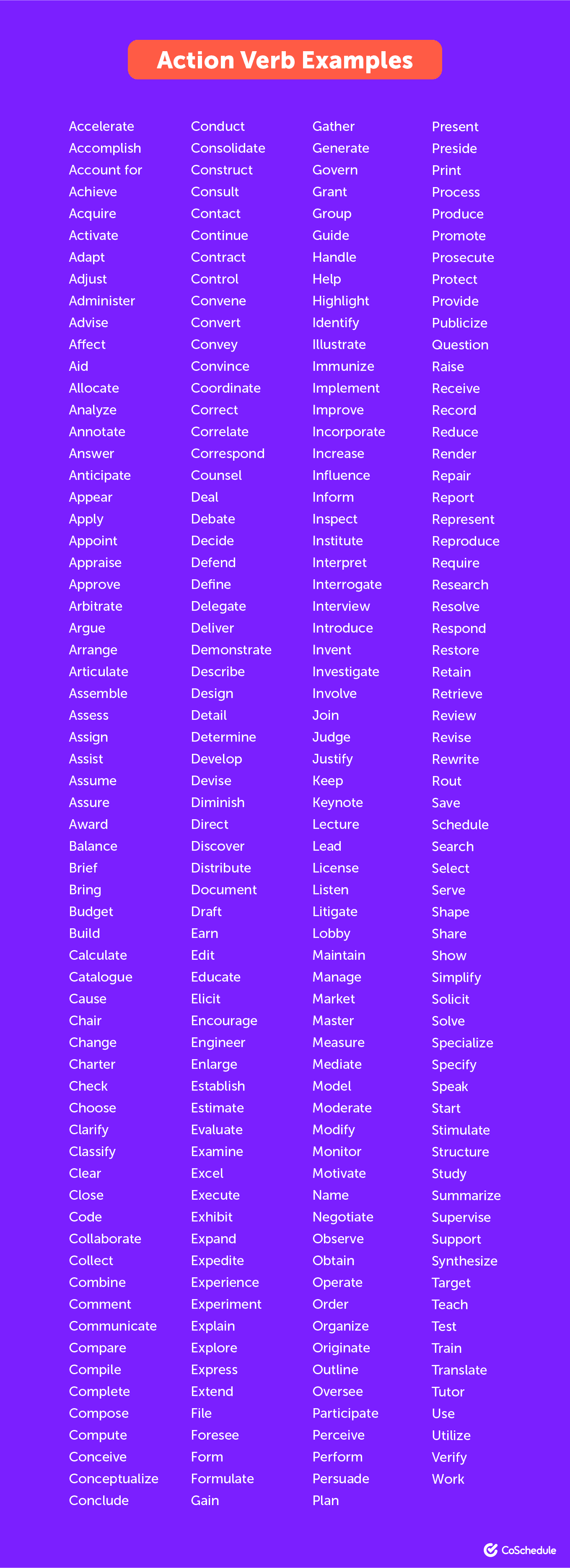
A big reason to use action verbs in headlines is to ensure you are avoiding passive voice. Passive voice is an ineffective narrative voice when your goal is to get people to pay attention to your content.
Why?
Well, it makes the information within seem unimportant or tells the reader that they can come back to it later. Active voice in the present or future tense, on the other hand, inspires action — making it the best voice for headline writing.
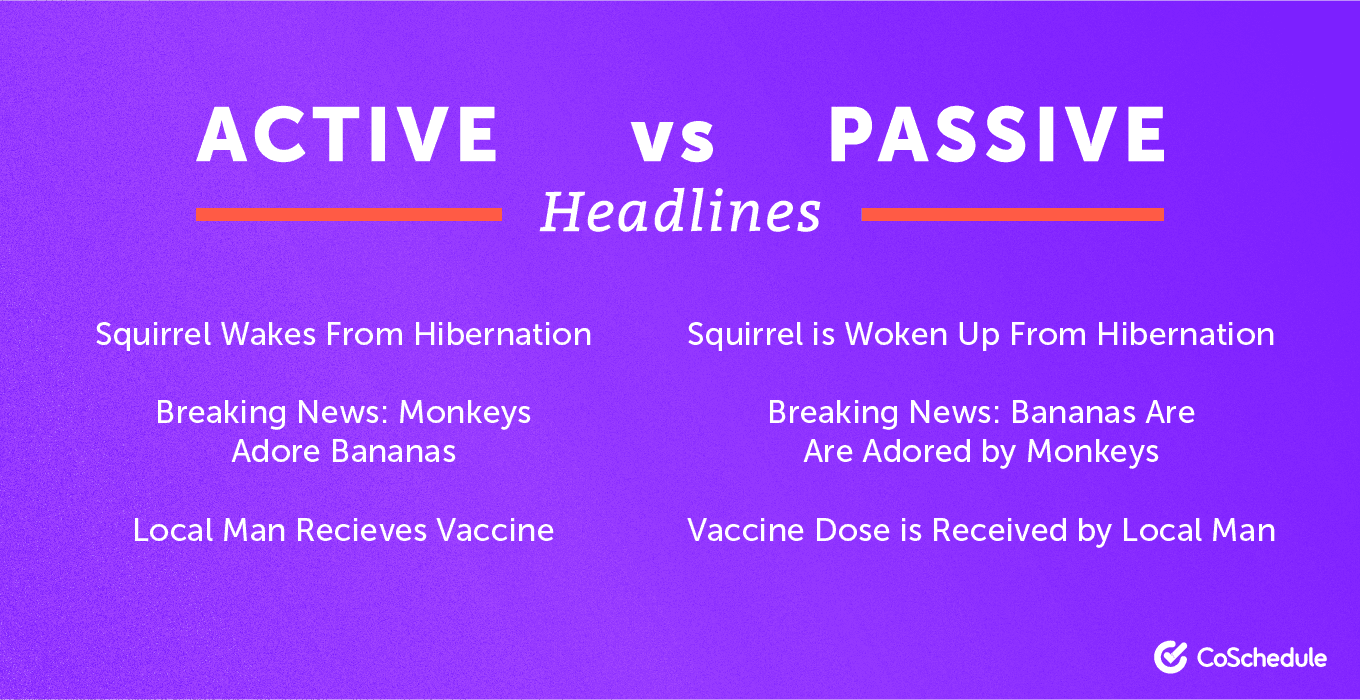
The key to remember is that your story — and, by extension, your headline — is a verb, not a noun. In other words, something needs to be happening in order to get people to read.
Relevant to a Trending or Important Topic
Another key feature of eye-catching headlines is relevance to trends or important topics. Relevance is essentially how important a topic is at the moment, and your audience will almost always respond strongly to content that is relevant to both their interests and current events.
A few ways to determine whether or not a topic is trending:
- Search for keywords on BuzzSumo.
- BuzzSumo is a free tool that provides content insights based on certain keywords and determines the most popular pieces within different content niches, so you can be sure your topic is trending before you write about it.
- Check trending topics on Twitter.
- Twitter has essentially become the world’s forum, and with communities of people from about any niche that exists, it’s a great place to find out whether or not people are talking about your topic.
- Search Google Trends.
- Google Trends is the best way to determine whether people are searching the internet for topics in your content niche. Simply type your keywords in and see the popularity of searches for those keywords.
- Search industry-related Google News.
- Want to know about the news surrounding your niche? A quick Google News search for related topics or industries will let you know what the newest stories are and how relevant your content is to current issues.
Use Curiosity Gaps to Inspire Clicks
Since humans are naturally curious, the use of curiosity gaps is another effective headline writing strategy that gets attention.
A curiosity gap is essentially a gap in the reader’s knowledge between how a story begins and how it ends. The reader knows the subject and outcome of a story, but not what happened in between. That is where they turn to you to provide answers.
These are valuable in both content and headlines because they inspire readers to dig deeper in order to satisfy their curiosity — and the place they’re looking is your content.
Easy to Skim
Finally, a vital aspect of killer headlines is that they are easy to skim.
Most often, your audience will find your content while they are scrolling through social media or casually browsing the web, and they expect to be able to understand the content and angle of your article after a simple skim of the headline.
This is why you need to ensure that all of your headlines contain the vital information for anyone considering giving the article a read, while being short and concise enough that they can read it in under a second.
To show the importance of skimmability in headlines, I did a quick Google News search for the term “Content Marketing”.
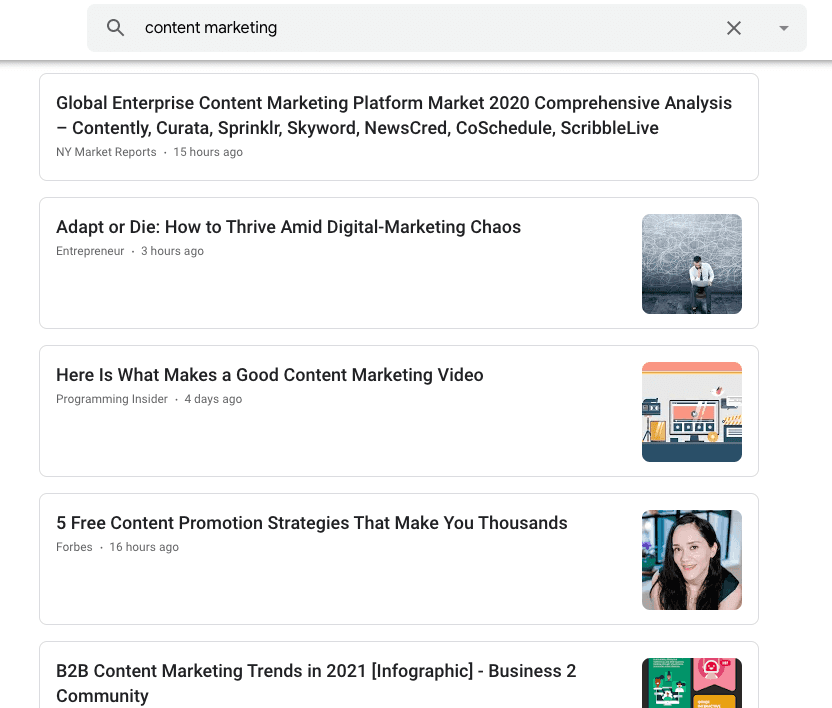
The headline on top is far too long and crammed with information, so it doesn’t work well as an eye-catcher. The headline below it, “Adapt or Die”, however, is short and skimmable, and catches your eye at the beginning and end of the headline. The “Good Content Marketing Video” headline is also skimmable, and it is clear for anyone looking to make marketing videos that this article will explain how.
The same goes for the headline a little lower on the page, “5 Content Promotion…” This headline works well because it can be understood what it is offering right away, and it catches readers’ eyes with a number at the start and a promise to “Make You Thousands”, a claim that will make most casual scrollers do a double-take.
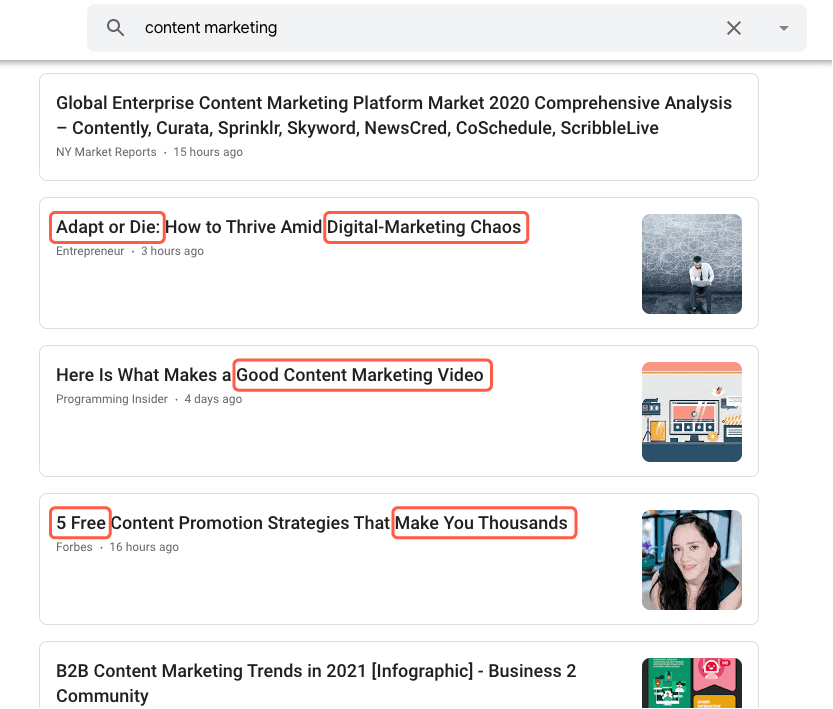
There are three quality, skimmable headlines here sandwiched between two headlines that don’t have the same skimmability. Which ones do you think get clicked on more often?
Examples of Eye-Catching Headlines and What Makes Them Work
Now that you have a firm grasp of what makes a headline as attention-grabbing as possible, let’s look at some eye-catching headline examples that are live on the web at this very moment and talk about why they work.
Smart Blogger: “An Open Letter to Writers Struggling to Find Their Courage”

This headline from a SmartBlogger article stands out right off the bat because of its use of emotional language. It comes right out and says who the article is for — writers — and brings up the struggle to find courage — something which is relatable to a lot of writers who get caught up in their 9–5 jobs.
The emotion inherent in this headline is also representative of the overall emotion of the article, and thus readers who click because of the headline will not be let down by the content.
Becky Mansfield: “How to hit 1,000,000 visitors in a year of blogging”
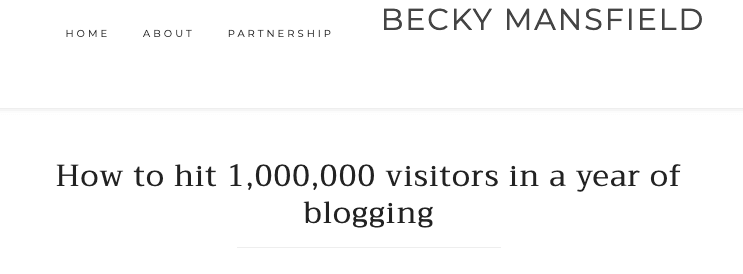
This article stands out because it creates a curiosity gap for readers to try and bridge by reading the article. If you’re a writer, you see this headline and think, “Wow, is that even possible? If it is, how do I do that?” That curiosity alone is enough to get people to click on the article, and then the content has the job of filling in that gap of knowledge.
In addition, this article headline is easy to skim, and the number really makes it pop as an eye-catching headline.
Bloomberg: “Covid-19 Isn’t the Only Thing Shortening American’s Lives”

This headline from a Bloomberg article is a great example of an eye-catching headline for two reasons.
One, this headline relates to a trending and relevant topic in COVID-19 — something which people are interested in — and uses that as the opener for the headline. Second, it creates a curiosity gap by saying that COVID-19 isn’t the only thing shortening lives, which makes people question, “Well, what else is shortening American lives?”
That curiosity gap is great for this article because people know that COVID-19 has been shortening lives, but they probably don’t know what else is. This curiosity gap is then filled within the contents of the article.
USA Today: “A massive iceberg — larger than New York City — breaks off Antarctica”

This article from USA Today is eye-catching because it uses active voice (always use active voice), and it’s easy to skim. You can look over the headline and understand what happened, and then if the headline causes enough curiosity within the reader, they will click it. Additionally, the action verb within the headline (i.e. “breaks”) makes it clear that this is a recent event — making it more enticing for readers to click.
Daily Beast: “Listen to the First-Ever Audio From Mars Thanks to Perseverance Rover”

This headline from a Daily Beast article makes a great case for being clicked on by providing the audience with an action verb as a direction to follow: “Listen”. It also uses emotional language with “First-Ever” because that gets people excited, and then creates a curiosity gap by stating that you can listen to audio from Mars — something which sounds almost fantastical to most people.
How to Write Eye-Catching Headlines Yourself
By now, you should have at least a basic understanding of some aspects of eye-catching headlines that get people to click — emotion, action verbs, relevance, curiosity and skimmability — so how do you write these sorts of headlines for yourself?
Develop an Understanding of Your Topic
First, you need to have a solid grasp of whatever topic your article is discussing. I usually go about this by just doing some basic keyword searches for whatever topic I’m writing about.
For example, when preparing to write this article, I Googled keywords, like “eye-catching headlines”, “headline examples”, and “how to write headlines”. These searches yielded tons of results, and from there I read through posts from some of my favorite sites, along with a few I had never heard of before, until I had a pretty solid, basic understanding of the topic.
Then, I break down the information into a few categories.
- Who or what is the subject of your topic?
- What did they do or what can this topic help your reader achieve?
- Why should your reader care?
From there, you can get into actually developing the article and potential headlines for it.
Figure Out How Your Story Begins and Ends
This is not only one of the first steps to writing your article, but also a great way to develop your headline. If you can understand what the beginning and ending of your article are going to be, you can look for curiosity gaps that your audience may be interested in filling by reading your content.
From there, you can begin to try integrating these curiosity gaps into some of your possible headlines. Ask yourself what your readers will want to find out within the content of your article, and then include that in your headline to make them more interested in what you have to say.
A great way to do this is to write out an outline for your article before you begin writing. Your outline should look something like this:
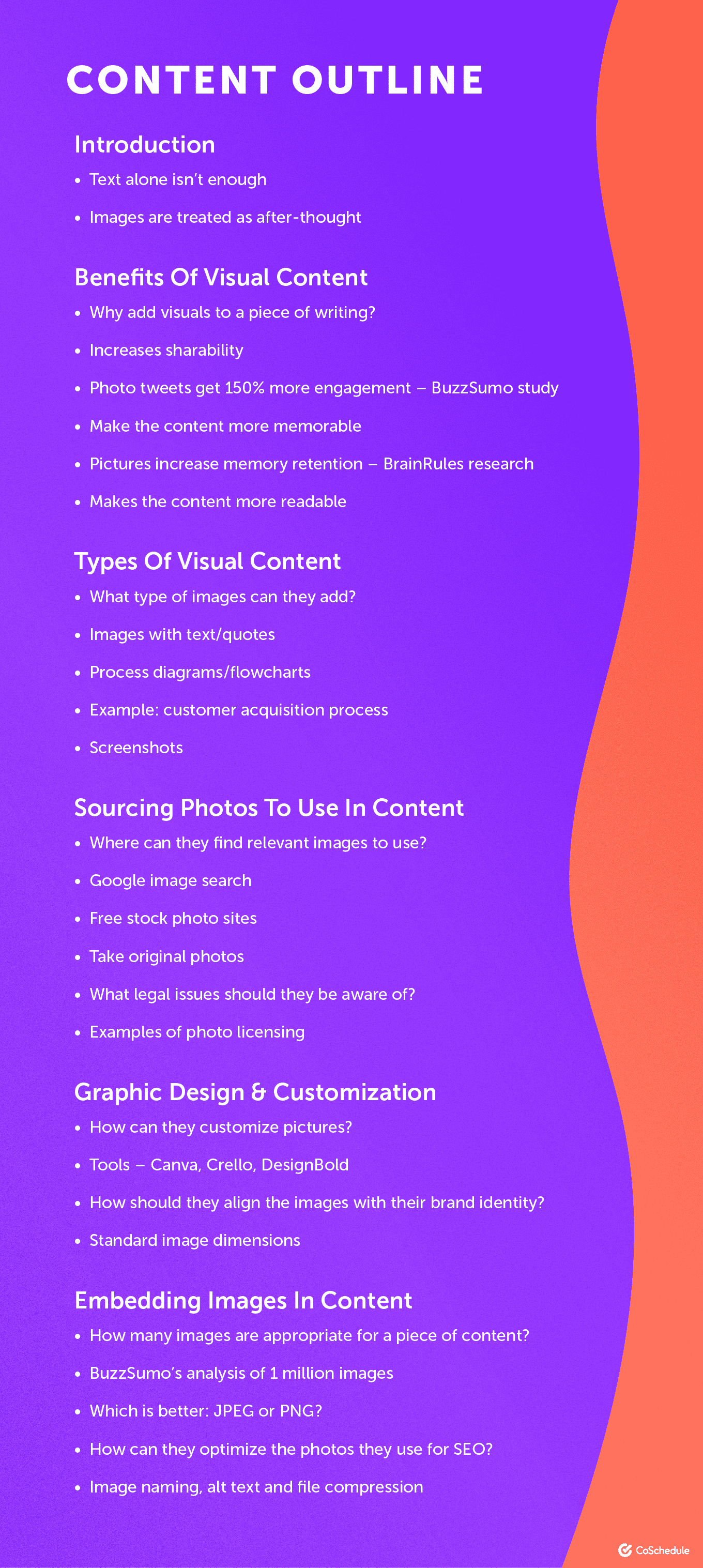
Determine an Emotional Lever to Pull in Your Headline
Another great way to ensure your headline will get clicks is to find a way to tie emotion to your content. As I said earlier, emotion is a key to people’s attention, so it is worthwhile to find a way to integrate some sort of emotion within your headline that best serves your content.
A great way to do this is to make use of the emotional words list attached to this article. If you, for whatever reason, don’t want to use that free resource, another way to incorporate emotion into your headline is to just think about how the content makes you feel.
Say your content makes you excited to try a new technique, you can use exciting words in your headline, like “This Killer Technique Will Inspire Your Most Successful Content Yet”. Using emotional and exciting words, like those underlined, within your headline can ensure that your audience will feel the same excitement and emotions about the content that you do.

This article from Unleashedis another solid example of an emotional headline. It offers a clear emotional benefit, financial stability, as opposed to recession, which is something people are scared of. This contrast creates a strong emotional reaction — making it an effective headline likely to get shared.
Use Curiosity Gaps
Curiosity gaps are, in my opinion, the best way to create interest in content through your headline. Using curiosity gaps within your headline forces your reader to click because they feel compelled to fill in the gap of information between what they do know and what they want to know about a topic.
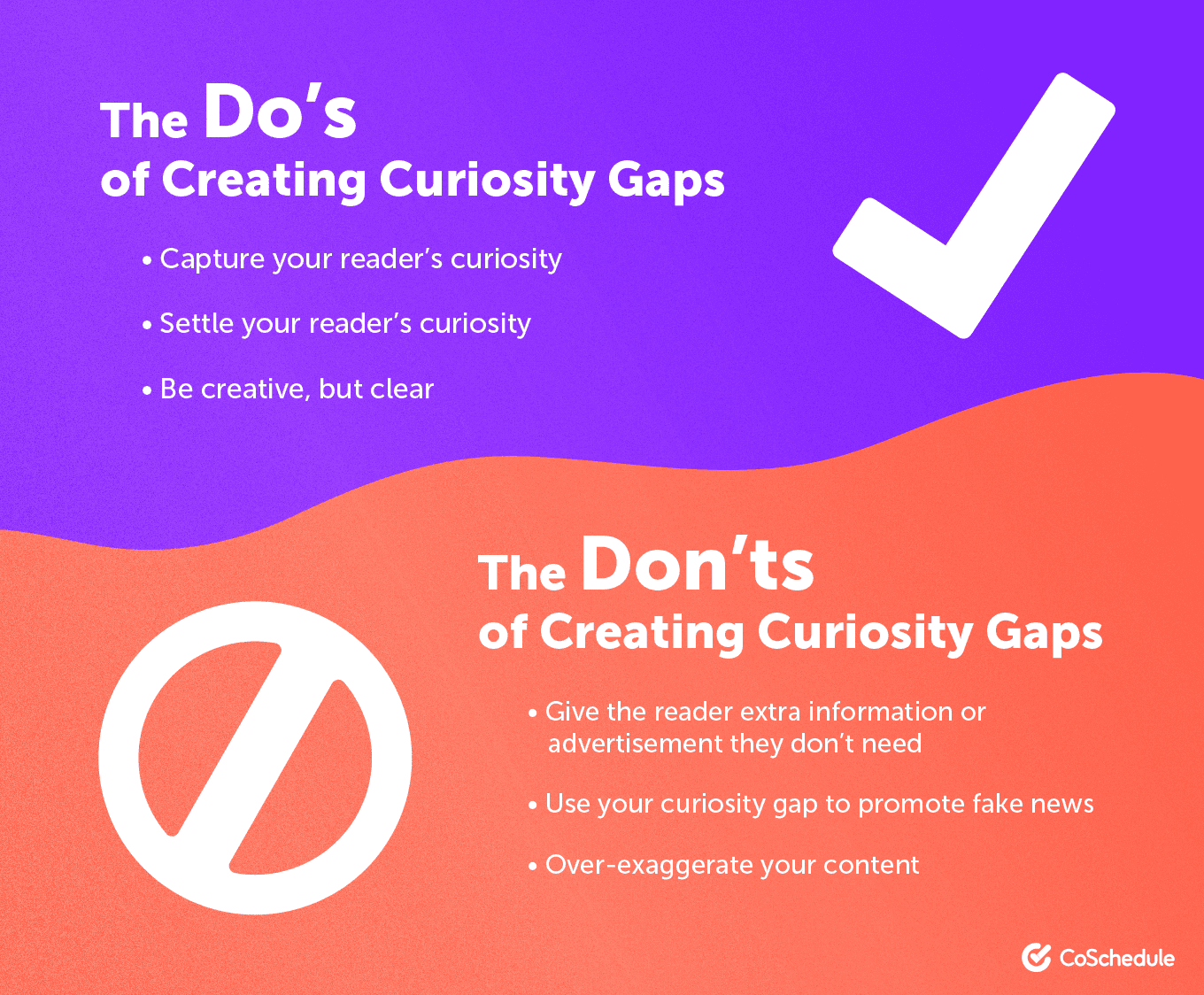
The best way to make this strategy effective is to make it clear that you are going to answer questions your readers may have about your topic within the copy of your article.
For example, in an article where you will explain what makes AP Style headlines different and why people should use them, your headline may say something like, “What is AP Style, and Why Should You Use It in Headlines?” This headline creates an information gap because even if someone knows what AP Style is, it is unlikely they know why it is important for headline writing.
Even if they know the answers to both of these things, it is clear that this article will fill information gaps as to why it is a good headline style.
Optimize Your Headlines With Headline Analyzer Studio
The most important part of the headline writing process (and the one I usually dread the most) is the part when you try out 20–30 different headlines for your article and then narrow down the list to a few favorites.
This process is hard, but it can be much easier when you have a tool like Headline Analyzer Studio at your disposal. This free application makes it easy to test out all of your headlines as you write them, so you can be sure that you are steadily improving each time.

Simply type each headline into the analyzer and let it go to work — giving you a score along with actionable advice and resources for improving your headlines as you go. I like to type as many headlines as I can into the analyzer, and then take my best ones and try to tweak them until they score as high as possible. Those are the headlines I use for my content.
For more advice, check out this complete guide to boosting your score in Headline Analyzer Studio.
Go Write Great Headlines
In this article, we covered some aspects of eye-catching headlines, examples, and went over how to write them for yourself.
Now you have the information to go out and write headlines that will catch the eyes and clicks of your audience. There are many things that may turn people away from your content, but by following the advice of this article, you can be sure that your headline isn’t one of them.

